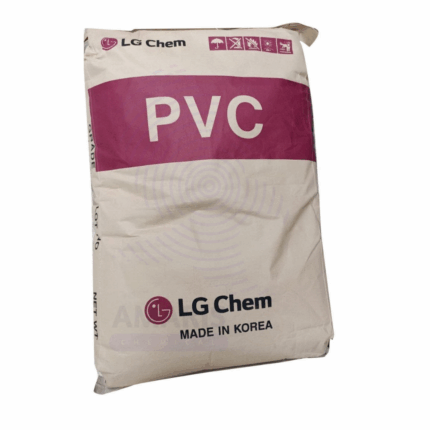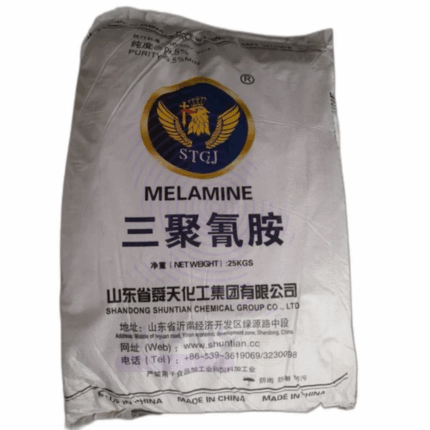PVC Resin 701
PVC Resin 701 is a high-quality suspension-grade polyvinyl chloride resin with a K-value of approximately 70–71, indicating high molecular weight. It is widely used in the production of flexible PVC products where excellent strength, elongation, and plasticizer absorption are required. PVC Resin 701 offers superior mechanical properties, high thermal stability, and good compatibility with plasticizers, making it suitable for calendaring, extrusion, and molding applications in diverse industries.
PVC Resin 701
Primary Uses
Flexible PVC Products
Used in making cables, wires, hoses, and tubing due to its excellent flexibility and plasticizer compatibility.
Ideal for synthetic leather and flooring where softness, strength, and durability are essential.
Employed in production of raincoats, boots, and inflatable items requiring elongation and softness.
Calendaring Applications
Applied in the production of flexible films, sheets, and decorative foils.
Used in wall coverings, upholstery, and tablecloths requiring a smooth, printable surface.
Extrusion Applications
Utilized in manufacturing soft tubing for medical and industrial use.
Applied in flexible conduit systems and protective coverings for mechanical and electrical components.
Dipping and Coating Applications
Used in glove manufacturing (industrial and medical) through plastisol dipping.
Employed in coatings for tool handles, safety equipment, and textiles.
Injection Molding
Applied in soft, flexible molded items like gaskets, seals, and footwear components.
Secondary Uses
Medical Applications (Flexible Grade)
Used in non-critical components like blood bags, IV tubing, and oxygen masks (depending on purity and formulation).
Toys and Childcare Products
Applied in the production of soft toys and teething items with appropriate stabilizers.
Automotive Interiors
Used in dashboard skins, seat covers, and door panel coatings for flexible, weather-resistant surfaces.
Adhesives and Sealants
Added in formulation of PVC-based sealants and adhesives to improve elasticity and adhesion.
Textile Coating
Used in manufacturing waterproof fabrics, tarpaulins, and awnings.
Basic Identification Attributes
Chemical Name (IUPAC): Poly(chloroethene) or Polyvinyl chloride
Common/Trade Name: PVC Resin 701
CAS Number: 9002-86-2
HS Code: 3904.10.00
Synonyms: Flexible-grade PVC resin, High K-value PVC
Physical & Chemical Properties
Physical State: Fine white powder
Color & Odor: White; odorless
K-Value: 70–71
Bulk Density: ~0.45–0.55 g/cm³
Plasticizer Absorption: High (due to high molecular weight)
Solubility: Insoluble in water; compatible with plasticizers and organic solvents
Safety & Hazard Attributes
GHS Classification: Not hazardous in solid form; harmful gases if decomposed
Toxicity: Low under normal use; avoid inhaling dust or fumes from heating
Exposure Limits: Use engineering controls to minimize airborne dust during handling
Storage & Handling Attributes
Storage Conditions: Store in a dry, cool, well-ventilated area away from heat and ignition sources
Container Type: 25 kg paper or PE-lined bags; bulk sacks or silos
Shelf Life: Indefinite under proper storage conditions
Handling Precautions: Minimize dust; use local exhaust ventilation
Regulatory & Compliance Attributes
May comply with FDA, RoHS, and REACH depending on additive systems used
Suitable for food contact and medical-grade applications if properly formulated
Manufactured in ISO and GMP-certified facilities
Environmental & Health Impact
Biodegradability: Not biodegradable
Ecotoxicity: Low in solid form; avoid release of dust into environment
Bioaccumulation: Not expected
PPE Required: Use dust mask or respirator, gloves, goggles, and protective clothing
Handling Guidelines: Avoid dust formation; use in ventilated or controlled environments
Storage Measures: Keep containers tightly closed and stored in a dry environment
First Aid Measures
Inhalation: Move to fresh air; seek medical attention if symptoms persist
Skin Contact: Wash exposed skin with soap and water
Eye Contact: Rinse thoroughly with water for 15 minutes; consult physician if irritation continues
Ingestion: Rinse mouth; do not induce vomiting; seek medical advice
Firefighting Measures
Fire Hazards: Not flammable; decomposes at high temperatures releasing toxic fumes
Extinguishing Media: Use water spray, dry chemical, foam, or CO₂
Special Precautions: Wear self-contained breathing apparatus and protective clothing
Hazardous Combustion Products: Hydrogen chloride gas, carbon monoxide, and carbon dioxide


 Preservatives(food)
Preservatives(food) Flavor Enhancers
Flavor Enhancers Acidulants
Acidulants Sweeteners
Sweeteners Antioxidants
Antioxidants Colorants(food)
Colorants(food) Nutraceutical Ingredients (food)
Nutraceutical Ingredients (food) Nutrient Supplements
Nutrient Supplements Emulsifiers
Emulsifiers
 Collectors
Collectors Dust Suppressants
Dust Suppressants Explosives and Blasting Agents
Explosives and Blasting Agents Flocculants and Coagulants
Flocculants and Coagulants Frothers
Frothers Leaching Agents
Leaching Agents pH Modifiers
pH Modifiers Precious Metal Extraction Agents
Precious Metal Extraction Agents
 Antioxidants(plastic)
Antioxidants(plastic) Colorants (Pigments, Dyes)
Colorants (Pigments, Dyes) Fillers and Reinforcements
Fillers and Reinforcements Flame Retardants
Flame Retardants Monomers
Monomers Plasticizers
Plasticizers Polymerization Initiators
Polymerization Initiators Stabilizers (UV, Heat)
Stabilizers (UV, Heat)
 Antifoaming Agents
Antifoaming Agents Chelating Agents
Chelating Agents Coagulants and Flocculants
Coagulants and Flocculants Corrosion Inhibitors
Corrosion Inhibitors Disinfectants and Biocides
Disinfectants and Biocides Oxidizing Agents
Oxidizing Agents pH Adjusters
pH Adjusters Scale Inhibitors( water)
Scale Inhibitors( water)
 Antioxidants(cosmetic)
Antioxidants(cosmetic) Emollients
Emollients Fragrances and Essential Oils
Fragrances and Essential Oils Humectants
Humectants Preservatives
Preservatives Surfactants(cosmetic)
Surfactants(cosmetic) Thickeners
Thickeners UV Filters
UV Filters
 Fertilizers
Fertilizers Soil Conditioners
Soil Conditioners Plant Growth Regulators
Plant Growth Regulators Animal Feed Additives
Animal Feed Additives Biostimulants
Biostimulants Pesticides (Herbicides, Insecticides, Fungicides)
Pesticides (Herbicides, Insecticides, Fungicides)
 Active Pharmaceutical Ingredients (APIs)
Active Pharmaceutical Ingredients (APIs) Excipients
Excipients Solvents(pharmaceutical)
Solvents(pharmaceutical) Antibiotics
Antibiotics Antiseptics and Disinfectants
Antiseptics and Disinfectants Vaccine Adjuvants
Vaccine Adjuvants Nutraceutical Ingredients (pharmaceutical)
Nutraceutical Ingredients (pharmaceutical) Analgesics & Antipyretics
Analgesics & Antipyretics
 Analytical Reagents
Analytical Reagents Solvents(lab)
Solvents(lab) Chromatography Chemicals
Chromatography Chemicals Spectroscopy Reagents
Spectroscopy Reagents microbiology-and-cell-culture-reagents
microbiology-and-cell-culture-reagents Molecular Biology Reagents
Molecular Biology Reagents Biochemical Reagents
Biochemical Reagents Inorganic and Organic Standards
Inorganic and Organic Standards Laboratory Safety Chemicals
Laboratory Safety Chemicals Specialty Laboratory Chemicals(Special Laboratory Equipment)
Specialty Laboratory Chemicals(Special Laboratory Equipment)
 Demulsifiers
Demulsifiers Hydraulic Fracturing Fluids
Hydraulic Fracturing Fluids Scale Inhibitors(oil)
Scale Inhibitors(oil) Surfactants(oil)
Surfactants(oil) Drilling Fluids
Drilling Fluids
 Dyes and Pigments
Dyes and Pigments Bleaching Agents
Bleaching Agents Softening Agents
Softening Agents Finishing Agents
Finishing Agents Antistatic Agents
Antistatic Agents
 Admixtures
Admixtures Waterproofing Agents
Waterproofing Agents Sealants and Adhesives
Sealants and Adhesives Curing Compounds
Curing Compounds Concrete Repair Chemicals
Concrete Repair Chemicals Anti-Corrosion Coatings
Anti-Corrosion Coatings
 Surfactants(cleaning)
Surfactants(cleaning) Builders
Builders Enzymes
Enzymes Solvents (Cleaning)
Solvents (Cleaning) Fragrances
Fragrances
 Electronic Chemicals
Electronic Chemicals Catalysts
Catalysts Lubricants
Lubricants Photographic Chemicals
Photographic Chemicals Refrigerants
Refrigerants Automotive chemicals
Automotive chemicals Pyrotechnic Chemicals
Pyrotechnic Chemicals
 Biodegradable Surfactants
Biodegradable Surfactants Bio-based Solvents
Bio-based Solvents Renewable Polymers
Renewable Polymers Carbon Capture Chemicals
Carbon Capture Chemicals Wastewater Treatment Chemicals
Wastewater Treatment Chemicals
 Pigments
Pigments Solvents(paint)
Solvents(paint) Specialty Coatings
Specialty Coatings Binders/Resins
Binders/Resins Additives
Additives Driers
Driers Anti-Corrosion Agents
Anti-Corrosion Agents Functional Coatings
Functional Coatings Application-Specific Coatings
Application-Specific Coatings
 Fresh Herbs
Fresh Herbs Ground Spices
Ground Spices Whole Spices
Whole Spices Spice Blends
Spice Blends Dried Herbs
Dried Herbs
 Leavening Agents
Leavening Agents Dough Conditioners
Dough Conditioners Flour Treatments
Flour Treatments Fat Replacers
Fat Replacers Decoratives
Decoratives Preservatives(baking)
Preservatives(baking)
 Plasticizers & Softeners
Plasticizers & Softeners Reinforcing Agents
Reinforcing Agents Adhesion Promoters
Adhesion Promoters Vulcanizing Agents
Vulcanizing Agents Antidegradants
Antidegradants Blowing Agents
Blowing Agents Fillers & Extenders
Fillers & Extenders Accelerators & Retarders
Accelerators & Retarders






















